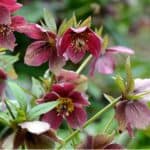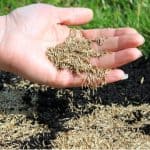Last updated on April 26th, 2022
Our site is reader supported, this means we may earn a small commission from Amazon and other affiliates when you buy through links on our site.
If you have clay soil, you might be thinking that you can’t possibly grow any plants because so many plants require rich, loamy and perlite-infused soil, or at the very least free-draining soil, and this isn’t usually the case when you have clay soil. The problem with clay soil is that it’s typically compact so it’s very difficult to get water to flow through it or allow struggling weak roots to get down into it.
On the other end, you have to consider that clay soil actually has plenty of nutrients and these make it a perfect growing space for perennials. You can always improve the soil a little bit, adding things like sand to try and break it up so that it’s easier for your plants to establish themselves but in the meantime, we’ve compiled a list of the 12 best perennials for clay soil so that you can pick something that will improve your garden appeal immediately.
12 of the best perennials that are suitable for clay soil
1. Hemerocallis – Day Lillies
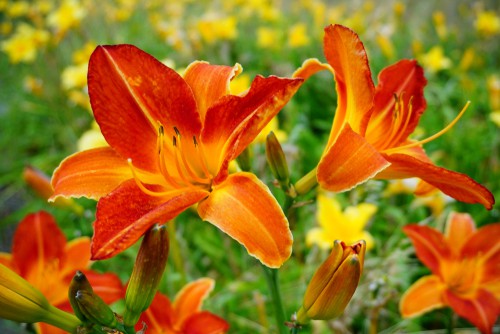
Day Lillies are very adaptable to different levels of moisture and soil. They are in fact one of the safest perennials to grow in clay soil because even with poor drainage they will usually survive quite well and the flowers produced are nothing less than spectacular.
2. Echinacea – Coneflower
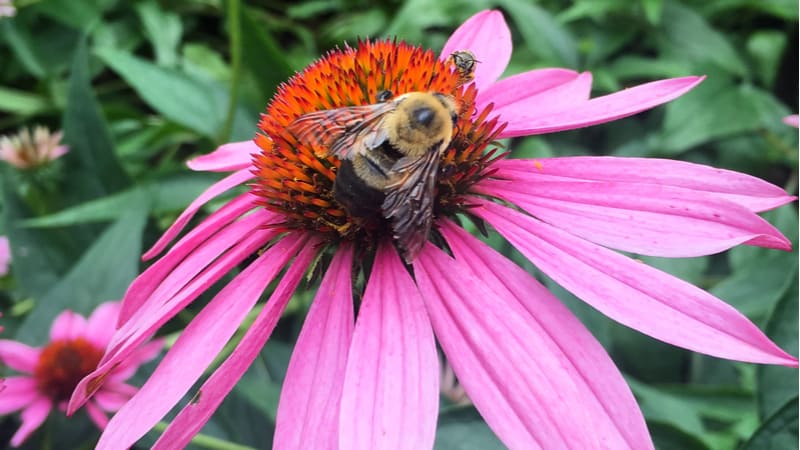
Echinacea, also known as Coneflowers, can grow in any type of soil as long as it’s well-draining, which means digging plenty of grit into the clay soil.
They’re very tolerant of drought and heat. The name is derived from the centre of the flower that sticks up in the shape of a cone and it attracts a lot of pollinators during the growing season. It is dotted with flat petals that can be purple, pink or white and even yellow depending on the variety that add a lot of colour and interest to your garden.
3. Hosta
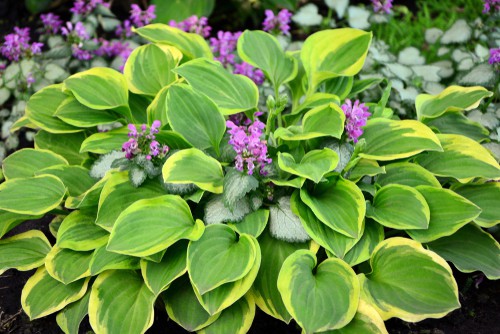
Hosta is very popular for shaded areas, there are thousands of different varieties of this plant and some do very well planted in clay soils. Make sure that they don’t get planted in an area that has a lot of standing water. This is one of those cases where you might want to make a small adjustment to your soil by adding something like sand to really loosen it up so that the Hosta doesn’t get waterlogged.
4. Heartleaf Brunnera
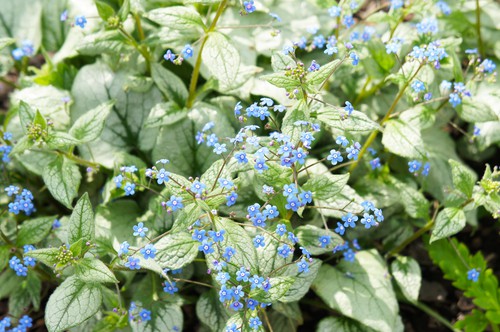
The Heartleaf Brunnera is perfect for planting in clay soil in shaded spots of the garden. In fact, if you have both clay soil and a shaded area, there’s almost very little you can grow, however, along with Hostas, this perennial is one exception.
This plant is a beautiful perennial that grows in full shade or partial shade quite well, even in clay conditions. It grows in a tight mound so it won’t overtake your garden. The leaves are quite variegated and add a lot of geometric appeals.
5. Monarda – Bee Balm
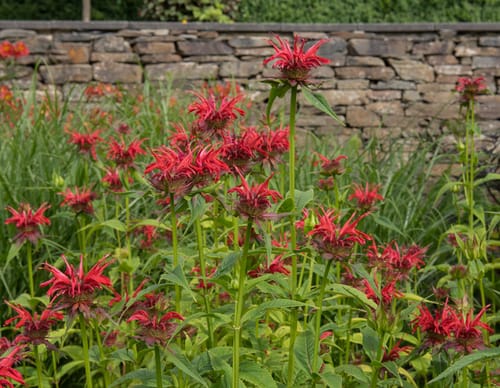
The Monarda, or Bee Balm plant is a great way to add a ton of colour to your garden. It is yet another great plant for attracting pollinators, hence its name. There are very few plants that offer more robust colours in the middle of summer than this. They will spread underground using stems so they do need an area with light.
There are newer cultivars you can invest in that are more restrained in terms of their spread, which will be perfect for smaller areas in your garden. Otherwise, they have dark green, variegated foliage on top of which you will get an abundance of bright fuchsia coloured flowers during the summer.
6. Rudbeckia – Black-Eyed Susan
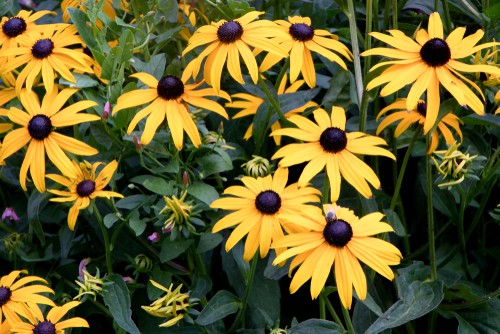
The Black-Eyed Susan provides you with a bright splash colour and a very long blooming cycle. You can actually increase the flowering cycle of the Black-Eyed Susan by deadheading the spent flowers on a regular basis.
It has a large, rich green foliage that fans out along the bottom of the plant, towards the ground while the flowers grow like daisies, on upright stems on top of the plant. Together these add a lot of variety to the shape and the structure of your garden.
7. Heliopsis helianthoides – False Sunflower
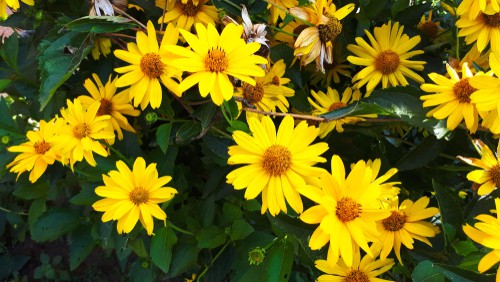
This plant gets its name from the fact that it’s often mistaken for small sunflowers because the flowers are an eye-catching sunny yellow colour. This is a wonderful native perennial that provides you with plenty of colour in the middle of summer.
They’re incredibly adaptable to all types of soil conditions so you can grow them in clay soil, as long as they have full to partial sun. Make sure they are well watered but don’t remain in waterlogged soil.
8. Panicum virgatum – Switch Grass
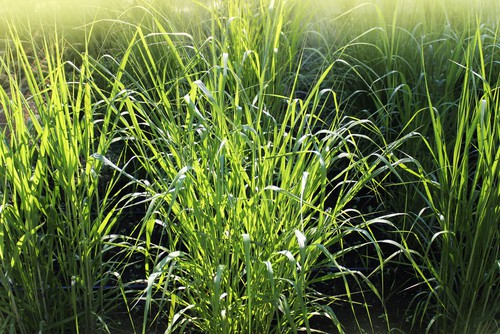
Switchgrass is a tall grass that takes on a mixture of green and often dark burgundy colours. It’s a very easy plant to grow no matter the soil conditions you have in your garden. It does best, however, if it has access to the full sun and if you want optimum performance, of course, make sure it has good drainage.
No products found.
9. Asclepias tuberosa – Butterfly Weed
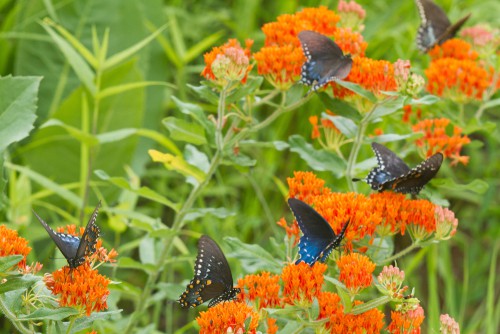
Even though it is called a weed, the ‘Butterfly Weed’ is not actually a weed at all. It’s actually a very beneficial perennial that you can put in your garden as a source of food for the Monarch butterflies.
It will bring butterflies and other pollinators to your garden while also enriching the space with burnt orange flowers, often the colour of a rich sunset.
10. Aruncus dioicus – Goatsbeard
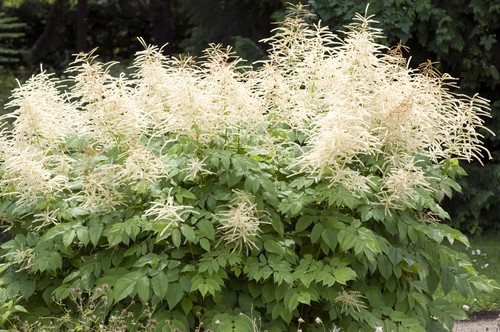
Goatsbeard comes in many varieties and hybrids. They are tolerant of full sun all the way to full shade, although they do best if they receive filtered shade in the afternoon with access to the sun in the morning. A very popular perennial plant.
11. Amsonia ‘Blue Star’
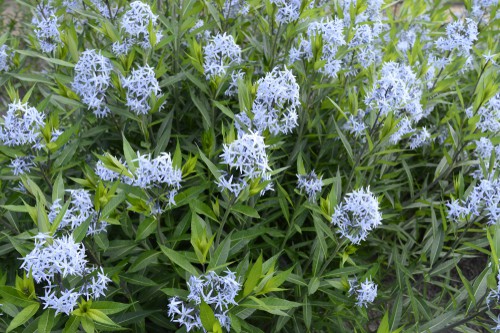
The Amsonia ‘Blue Star’ tolerates full to partial sun and produces flowers early in the season. You get a nice range of sizes and colours. After the clusters of small, light blue flowers are finished blooming the plant remains a decent backdrop thanks to its green foliage.
If you have a problem with deer or rabbits rest assured they won’t bother this plant. As mentioned, it does need partial to full sun to thrive, so if you grow it in the shade it will survive just fine but the stems will stretch out instead of getting stronger and eventually flop over.
No products found.
12. Ligularia przewalskii
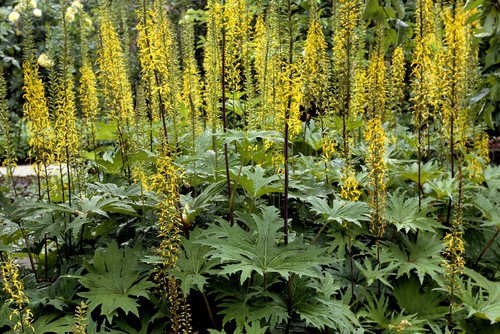
This is a somewhat difficult perennial because they love water but they don’t want to sit in it. They are also quite picky about the sun in, that they love the sun but they don’t want it too much, and they love the shade but they don’t want too much of that either. However, you can find different varieties that add size, height and colour to your clay soil. The flowers are grown in small clusters along tall stems that reach out above the wide, hunter green foliage and are great at attracting pollinators.
No products found.
With any of these, you can, of course, mix and match until you get a good collection of colours throughout the entire growing season. It is very important to pay attention to which plants can tolerate clay soil and shade versus which plants can only tolerate clay soil if there’s ample sunlight. If you have issues with deer or rabbits, or you really need to bring pollinators to the front, you can mix and match the different options from this list that suit your conditions.
Related articles you may be interested in
10 plants that grow well in clay soil, including shrubs and perennials
12 of the best perennials for shade
The best perennials for attracting bees
How to sow perennials from seed step by step
Last update on 2025-12-19 / Affiliate links / Images from Amazon Product Advertising API








